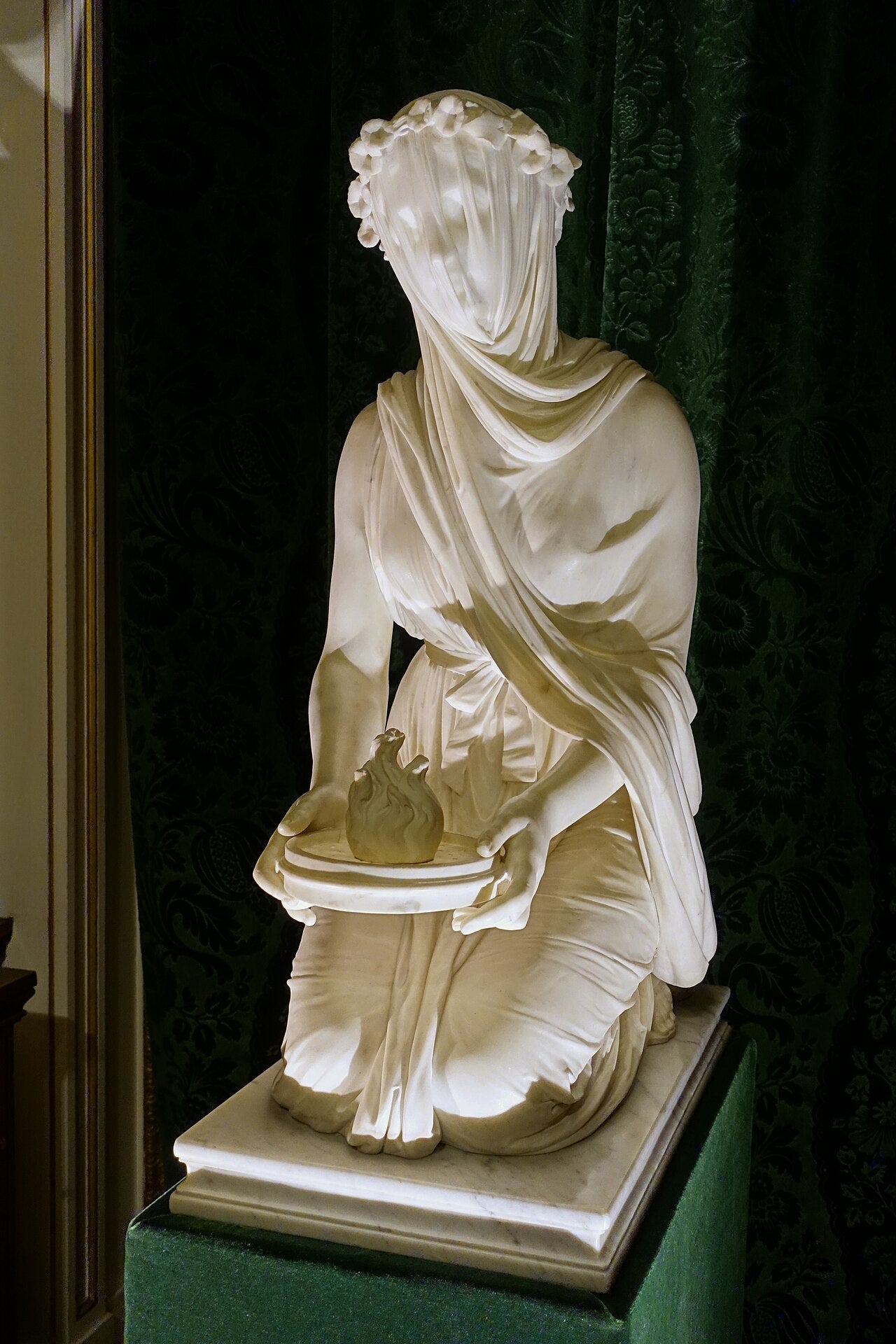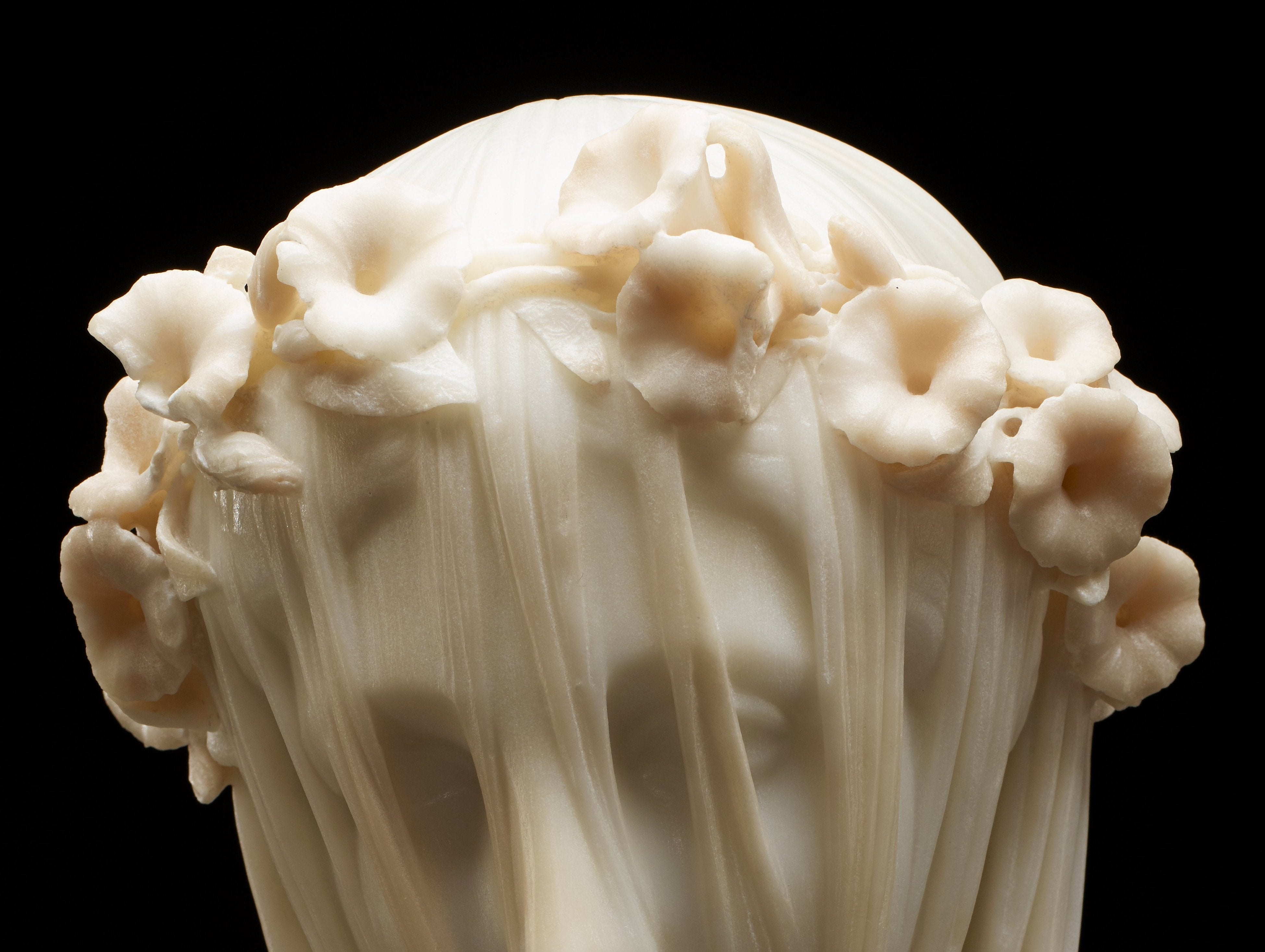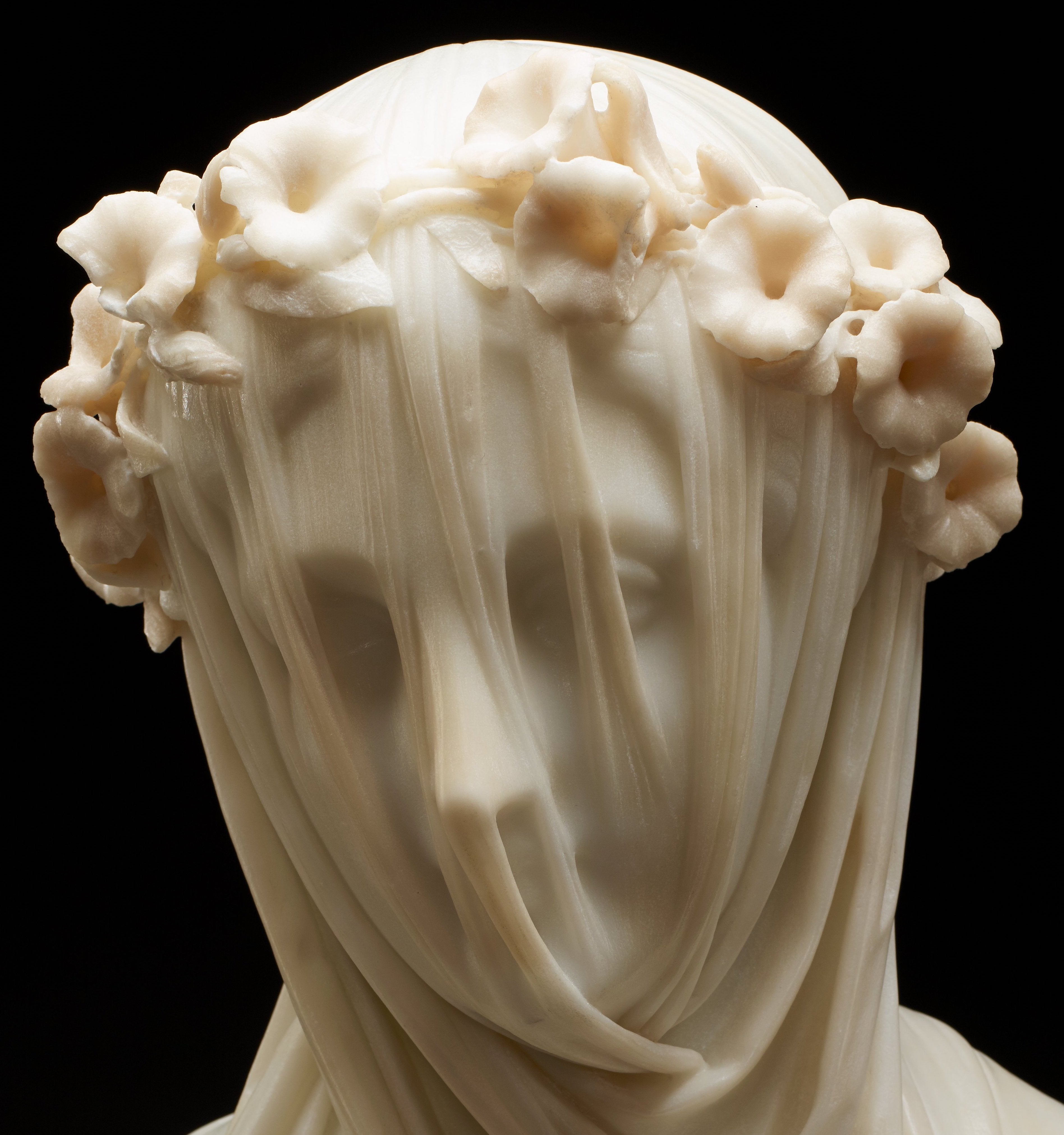
Among the marbles that transcend time, Raffaelle Monti's sculpture "The Veiled Lady" emerges as a masterpiece that captures the essence of femininity and the technique of the renowned Italian sculptor. This work transcends the boundaries of realism by sculpting a female figure shrouded in mystery, her face partially hidden by a skillfully sculpted veil. Raffaelle Monti, known for his exceptional skills in portraying the transparency of fabrics in marble, leaves a lasting legacy through this intriguing sculpture.
This piece, like many of Raffaelle Monti's works, not only reflects the sculptor's refined technique, but also highlights the symbolic complexity inherent in the veil that surrounds the figure. In this article, we will explore the story behind "The Veiled Lady", from its conception in 19th-century Milan to its impact on the London art scene, providing an in-depth look at the historical context, sculptor's influences, and critical reception. .

What is the story of "The Veiled Lady" by Raffaele Monti?
"The Veiled Lady" by Raffaele Monti, also known as "The Veiled Vestal," is a marble sculpture created in 1847. The sculpture represents a Vestal Virgin, who were priestesses of the Roman goddess Vesta, responsible for maintaining a sacred fire that symbolized the home and the house. The Vestal Virgin is depicted with a veil that covers part of her face, giving the sculpture an ethereal and mysterious quality.
The story behind the sculpture's creation dates back to a visit by William Cavendish, 6th Duke of Devonshire, to Raffaele Monti's studio in Milan in 1846. Cavendish, known as the "bachelor duke" in England, was impressed by the skill of Raffaelle Monti and commissioned the sculpture of a veiled woman. Cavendish left a substantial deposit to Raffaelle Monti, indicating his confidence that the sculptor could create a masterpiece.
Raffaelle Monti, already recognized as a talented sculptor, completed the sculpture in April 1847. The Veiled Vestal was initially displayed at Chiswick House, Cavendish's west London residence. Later in 1999, the sculpture was moved to Chatsworth House, the Cavendish family estate.
The sculpture became a highlight in Cavendish's art collection, which included several white marble sculptures. In the 2005 film "Pride and Prejudice", directed by Joe Wright and starring Keira Knightley, the Veiled Vestal is featured in a scene in the sculpture gallery of the home of Mr. Darcy, played by Matthew Macfadyen.
The figure of the Vestal Virgin, especially when veiled, became a popular subject in 19th-century sculpture, and Monti contributed to the popularization of this style. Monti's ability to create the illusion of a translucent veil in marble highlighted his technique and artistry.
The Veiled Vestal, along with other works by Monti, was exhibited at the 1851 Great Exhibition in London, representing Italy. Raffaelle Monti became known as a commercial artist in London, producing popular sculptures, although he strove to maintain the distinction between fine and commercial art.
Throughout his life, Monti faced financial challenges and, after the unification of Italy in 1870, he found himself in a precarious situation. He died in 1881, leaving an artistic legacy marked by his technical skills and contributions to 19th century sculpture. The Veiled Vestal remains one of Raffaele Monti's best-known works, standing out for its beauty and symbolism.

Description of The Veiled Lady by Raffaele Monti
"The Veiled Lady" is a marble sculpture created by Raffaele Monti in 1860. The work is a representation of a woman whose face is partially obscured by a delicately carved marble veil. The woman's figure, which seems to emerge from the stone, conveys a feeling of mystery and grace. The Vestal Virgin is a recurring character in Monti's works, and in this sculpture, he portrays her with a unique combination of delicacy and realism. The veil that covers part of the figure's face is sculpted to create an illusion of lightness and transparency, highlighting Monti's technical skill.
The sculpture captures the essence of femininity and elegance, while the veil adds a layer of symbolism and mystery to the work. The figure's face is expressive, suggesting a combination of serenity and introspection.
Raffaelle Monti was known for his ability to create illusions of transparency in marble, and "The Veiled Lady" is a notable example of this talent. The work is a manifestation of the Italian sculptor's refined technique and his ability to convey emotion through stone.
Monti's sculpture not only reflects the aesthetic taste of the time, but also contributes to the tradition of depicting veiled female figures in 19th-century sculpture. "The Veiled Lady" remains an emblematic piece in Raffaele Monti's collection of works, standing out for its timeless beauty and the sculptor's technique in creating such a delicate and impressive representation.

Who was the artist Raffaelle Monti?
Raffaelle Monti (1818–1881) was an Italian sculptor known for his exceptional technical skills and his contribution to 19th-century sculpture. He was born in Milan, Italy, in 1818, into a family involved in the sculpture business, with his father, Gaetano Monti, being a respected sculptor. Raffaelle Monti began his artistic training alongside his father and later attended the Brera Academy of Fine Arts in Milan, where he won a Gold Medal at the age of 20. He continued his artistic education in Vienna, where he spent four years sculpting busts of the Austrian royal family.
Raffaelle Monti became a recognized sculptor, especially in the technique of carving veils and translucent fabrics in marble. His work "The Veiled Vestal" (1847), commissioned by the 6th Duke of Devonshire, is a notable example of this skill and has become one of his best-known pieces. In 1848, during the events of the Italian Revolution, Raffaelle Monti joined the revolutionary movement against the Austrian occupation. However, after the defeat of the insurgents, he left Italy and settled in London, where he continued his artistic career. Raffaelle Monti became a commercially successful sculptor in London, producing popular works and inspiring a number of imitations.
Throughout his career, Monti faced financial challenges, and his final years were marked by economic difficulties. He died in London in 1881. Raffaelle Monti is remembered for his technical skill, especially in creating sculptures that capture the lightness and transparency of marble fabrics. His works influenced the aesthetics of 19th century sculpture and continue to be appreciated for their artistic beauty and the technique they demonstrate.
